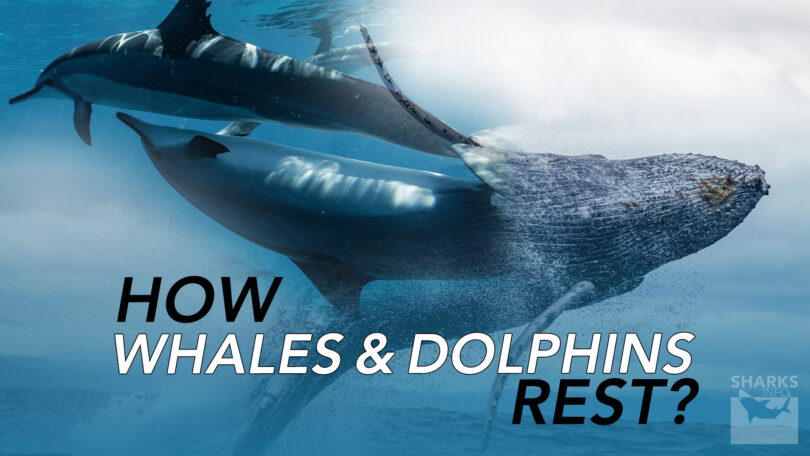In the boundless realm of the oceans, where fascination and enigma intertwine, two groups of marine mammals stand out with their remarkable abilities and perplexing behaviors: whales and dolphins. Renowned for their intellect and communication skills, these creatures also harbor a sleep mystery that has captivated scientists and nature enthusiasts alike for generations. This article aims to shed light on their paradoxical slumber habits, highlighting their capacity to unwind even while staying vigilant and responsive in their surroundings.
The Sleep Paradox: How Whales and Dolphins Rest?
In contrast to land-dwelling mammals, the aquatic environment poses unique challenges to the sleep patterns of whales and dolphins, leading to a sleep routine that defies conventional norms. Both dolphins and whales have devised resourceful strategies to find rest in the sprawling oceans.
Unveiling The Sleep Paradox of Whales and Dolphins
Both whales and dolphins belong to the cetacean family and exhibit impressive intelligence and intricate social structures. However, their sleep behaviors differ from their terrestrial mammals, including humans. The paradox arises from the fact that these creatures require air to breathe despite living in the watery realm.
While creatures on land can unconsciously draw breathing, cetaceans must consciously move to the surface to access oxygen. This presents a conundrum to their sleep requirements and lowers metabolic activity during slumber. These creatures have evolved unique solutions to navigate this challenge.
Solving The Paradox: Unihemispheric Slow-Wave Sleep
To unravel the sleep pattern, whales and dolphins display a phenomenon termed Unihemispheric Slow-Wave Sleep (USWS). This sleep pattern allows one hemisphere of the brain to rest while the other remains partially awake, alert, and responsive. During sleep, the active hemisphere plays vital functions like breathing and muscle control, ensuring their uninterrupted existence in the oceanic realm.
What Is the Role of Social Structure of Whales and Dolphins in Slumber?
The slumber patterns of these marine mammals are intricately demonstrating their social dynamics and surroundings. Many cetacean species are profoundly social, navigating the open waters in pods. Within these pods, individuals flip between rest and vigilance against potential threats. This strategy enables these creatures to enjoy both restorative sleep and the protective shield offered by their companions.
What Challenges and Vulnerabilities Do Whales and Dolphins Bears During Slumber?
The subdued activity of one brain hemisphere during slumber means these creatures never truly achieve full consciousness, inhibiting deep sleep. This perpetual state of partial awareness can impact their cognitive behavior as well as their well-being. Moreover, the difference in size between genders, makes these species more susceptible to predators and environmental factors. Their reliance on balancing sleep and respiration further highlights the intricacies of their survival.
What Are the Conservation Considerations for Whales and Dolphins During Slumber?
As human actions impinge on marine ecosystems, the resting patterns of these creatures can be disrupted. Noise from boats, marine activities, and other human activities can hinder their ability to find restful havens. Sleep deprivation can lead to stress, compromised immunity, and ultimately affect their health.
Conservation initiatives must account for these creatures’ distinct sleep requirements to ensure their survival. Implementing safety measures and preserving their natural habitats can significantly contribute to safeguarding their delicate sleep equilibrium.
Final Thought
The sleep paradox of whales and dolphins unveils the intricate ways life adapts to the survival posed by its surroundings, behavior, biology, and even psychological processes. Through the complex mechanism of Unihemispheric Slow-Wave Sleep, these magnificent beings find rest while staying vigilant in their oceanic habitat. The more we comprehend, the better equipped we become to shield these majestic creatures and the ecosystem they inhabit.







